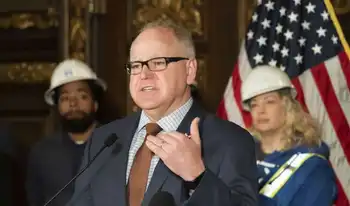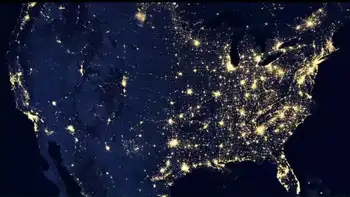Scientists set the nuclear fusion switch on
UNITED KINGDOM - A pivotal step in the march towards fusion power, the "Holy Grail" of sustainable clean energy, could be taken this year.
Scientists in the U.S. are preparing for the dramatic moment when the world's most powerful laser unleashes the nuclear force that lights up the Sun and achieves "ignition".
At that moment, 192 laser beams housed in a building the size of three football pitches will focus on a target the size of a peppercorn to trigger a self-sustaining fusion reaction.
If all goes according to plan, this could be achieved in October. Although no more than a test of the technology, it could mark the start of a revolution that will change the science and politics of energy forever.
Scientists have spent decades chasing the dream of fusion power, which holds out the promise of producing unlimited amounts of clean energy from hydrogen, the most abundant element in the universe.
Nuclear fusion happens when the nuclei of atoms are driven together so hard that they fuse to form a heavier particle. A self-sustaining chain reaction occurs as more atomic nuclei collide, releasing huge amounts of energy in the process.
Stars are driven by nuclear fusion, as is the immense destructive power of the hydrogen bomb. But no one has yet managed to contain and sustain a fusion reaction under controlled conditions.
The biggest problem facing fusion scientists is how to generate the enormous temperatures and pressures necessary for long enough in a confined space.
Self-sustaining fusion requires conditions more extreme than at the centre of the Sun, with temperatures of around 100 million centigrade.
At the new National Ignition Facility (NIF) at Lawrence Livermore National Laboratory in California, scientists are closer to overcoming this hurdle than anyone has been before.
The 10-storey high NIF is a £2 billion sledgehammer built to crack a nut.
Opened last year, the facility houses an array of optical and electronic devices designed to split a laser 192 ways and boost the combined energy of the beams to 1.8 megajoules.
At its heart the "nut" is a tiny beryllium capsule the size of a peppercorn, designed to hold a dash of nuclear fuel in the form of deuterium and tritium.
Both are isotopes, or different atomic versions, of hydrogen.
The aim is to focus the laser beams on the capsule and blast it with a pulse of energy that causes the fuel to implode in an instant, reaching temperatures and pressures greater than those at the centre of the Sun.
Crushed together, the deuterium and tritium nuclei will fuse, releasing a flash of energy. If the experiment is a success, more energy will be generated than was pumped into the capsule in the first place.
A report of the latest progress at the NIF published last week in the journal Science shows that the scientists are on target.
Dr Siegfried Glenzer and colleagues described the first experiments in which all 192 of the lasers were tested on targets empty of fuel, achieving a beam energy of about 40% the NIF's maximum.
A major problem that had to be overcome was getting the capsule to implode evenly.
This was done by encasing it in a gold cylinder called a hohlraum, pierced by holes through which the laser beams were shone.
"We're doing the real thing, and it's going better than expected," said Dr Glenzer, quoted in a Science news article.
The facility's "ignition campaign", leading to the first attempt to produce a self-sustaining fusion reaction is due to start in earnest in May.
A decision will be made in July on whether or not to push ahead with full-scale fusion experiments paving the way to ignition in October.
British expert Professor Mike Dunne, director of the Central Laser Facility at the Rutherford Appleton Laboratory in Didcot, Oxfordshire, said: "It's come up better than anyone thought. They're ahead of the curve predicted."
Related News

Is nuclear power really in decline?
LONDON - By Kirill Komarov, Chairman, World Nuclear Association.
As Europe and the wider world begins to wake up to the need to cut emissions, Dr Kirill Komarov argues that tackling climate change will see the use of nuclear energy grow in the coming years, not as a competitor to renewables but as a competitor to coal.
The nuclear industry keeps making headlines and spurring debates on energy policy. With each new build project, the detractors of nuclear power crowd the bandwagon to portray renewables as an easy and cheap alternative to ‘increasingly costly’ nuclear: if solar and wind are virtually free…




